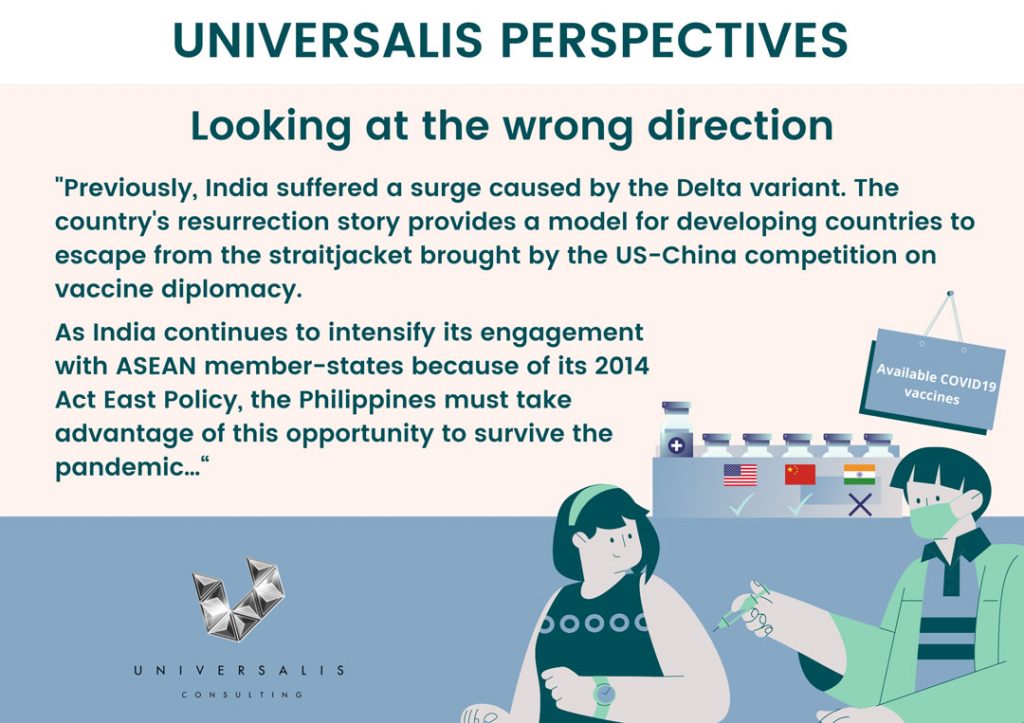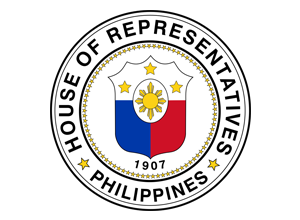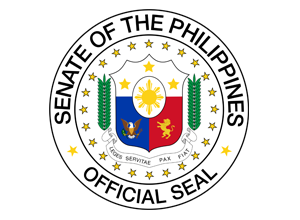Universalis Perspectives: Looking at the wrong direction

Throughout history, great power competition has defined the emergence and resolution of various international issues that disrupted human civilizations. Examples include the competition between Spain and Portugal to obtain more lands and colonies outside Europe, the conflict between Great Britain and Germany as well as the United States and Japan during the First and Second World Wars that costed millions of human lives and properties, and the global instability brought by the competition of the United States and Soviet Union during the Cold War. Unfortunately, despite the current pandemic, competition between rival states especially US and China still lingers affecting the quality of pandemic responses around the globe.
While the pandemic is essentially a health crisis, the way countries handled their respective domestic responses as well as the decisions of global leaders for multilateral cooperation in addressing the pandemic boils down to the reality that the pandemic is also a political problem. Such claim is evident as the United States and China are now engaged head-on with vaccine diplomacy strategies to developing countries that are also potential strategic allies for their respective geopolitical interests. At present, US President Joe Biden announced to donate 500 million jabs to developing countries especially in Asia while Chinese President Xi Jinping promised to provide 2 billion vaccines to the developing world before the end of 2021.
While there are already six COVID-19 vaccines included in the World Health Organizations’ Emergency Use Listing (EUL), available supply still fails to meet the enormous global demand. Further aggravating the situation was the reported hoarding of vaccines by rich nations; thus, leaving poorer countries to scramble with the available supply donated by the COVAX facility, China, Russia – and the US being a latecomer in the vaccine diplomacy race.
The Philippines is currently trapped in this situation. Aware of the reality of “vaccine nationalism” in which vaccine manufacturers in the US and Europe such as Pfizer, AstraZeneca, Moderna and Janssen were expected to prioritize first their origin states’ population, the Philippines sought assistance and help from China and Russia to obtain supply from their Coronavac (Sinovac) and Sputnik V (Gamaleya) vaccines. As a matter of fact, the initial months of Philippine vaccine rollout was primarily composed of donated- and purchased- Coronavac doses from China. It is only in the recent months that the Philippines was able to administer US-produced doses such as Pfizer, Moderna and Janssen since the United States decided to allow exportation of COVID-19 vaccines to other countries.
However, despite the race between China and the United States to supply the Philippines with COVID-19 vaccines, the country is still distant from its goal to achieve herd immunity by the end of 2021. One reason behind this phenomenon is the country’s fixation to continuously hedge between the generosity of the US and China currently competing in the domain of vaccine diplomacy. However, while these actions are considered as prudent and rational, it is important to note that there is another emerging power that can potentially solve the problem of vaccine shortage around the globe. That country is INDIA.
India is an emerging great power. Prior to the pandemic, economists predicted that India’s economy will overtake the US and China’s economic output and performance by 2050. In addition, India has also performed other global leadership roles aiming to escape great power competition that plagued the world in some of history’s major events. One good example was India’s initiative to cooperate with Ghana, Indonesia, Egypt, and the former Yugoslavia to launch the Non-Aligned Movement during the Cold War. In addition, India’s economic growth enabled the country to become an influential economic player as its development experience was hailed by economists as a new model for developing countries. Named as the Mumbai Consensus, the Indian development experience is now at par with the US-promoted Washington Consensus, China-inspired Beijing Consensus, and the Japan-initiated developmental state model that facilitated the East Asian Economic Miracle in the 1980s. Furthermore, similar to the major powers, India has also actively provided bilateral development assistance to selected Asian and African countries.
What differentiates India to the major powers such as the United States and China is its reputation as a center of production of various medicines, pharmaceutical products, and vaccines even prior to the pandemic. A Nikkei Asia columnist wrote that, before the current global epidemic, India has provided 60% of the world’s vaccine supply to address other diseases. The report specifically noted the cities of Hyderabad and Pune as major hubs with the former responsible for the one-third of global vaccine demand while the latter as capable of manufacturing 1.5 billion doses annually. In addition, India prides itself with 47 vaccines for other diseases accredited by the World Health Organization in comparison to China amounting only to five.
Recently, India has announced another medical breakthrough as its first indigenous COVID-19 vaccine produced by Bharat Biotech called Covaxin was discovered as effective in neutralizing the highly-contagious Delta variant. However, while the Philippine Food and Drug Administration (FDA) has already granted the jab with emergency use authorization (EUA), Covaxin supply still failed to reach Philippine soil. Also, despite the explicit willingness of the Indian government to allocate eight million doses of Covaxin to the Philippines, delivery of these doses from India is still pending.
As the Philippines is currently battling against the Delta variant, the government needs to take advantage of the opportunities for international cooperation with the government of India. With India’s proven track record of its contribution to address global health security issues before COVID-19, the Philippine accommodation of India’s allotted Covaxin supply will serve as a steppingstone to further deepen bilateral ties between the two nations as they steer towards the post-pandemic world. In addition, the Philippines needs to consider (re)activating expired and still effective bilateral agreements that address medical and health cooperation such as but not limited to the 1997 Memorandum of Understanding on Scientific and Technical Cooperation, and the 2007 Memorandum of Understanding on the Cooperation in the Field of Health and Medicine.
Previously, India suffered a surge caused by the Delta variant. While currently recovering, the country is now fulfilling its commitment to the world by delivering millions of vaccine doses to the developing countries. Indeed, India’s resurrection story provides an avenue for developing countries to escape from the straitjacket brought by the US-China competition on vaccine diplomacy. As India becomes more serious in engaging ASEAN member states because of its 2014 Act East Policy, the Philippines must take advantage of this opportunity to survive the pandemic and chart its rightful place in the post-pandemic world. These steps – especially linking the demand of Philippine local government units (LGUs) and private sector bodies to India’s vaccine production and supply – will not only ease the burden of our government but also benefit the individual lives of Filipinos, their livelihoods, the country’s collapsing healthcare system, and the nation’s post-pandemic economic recovery.


